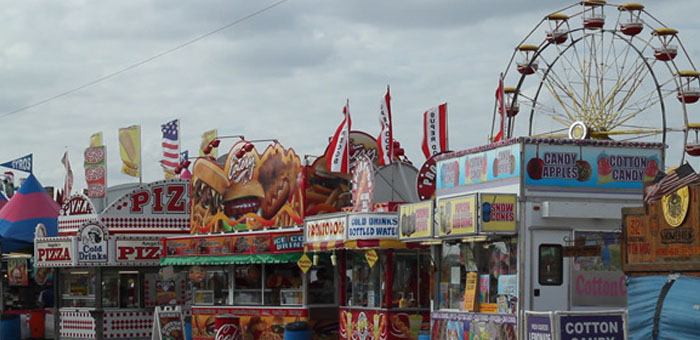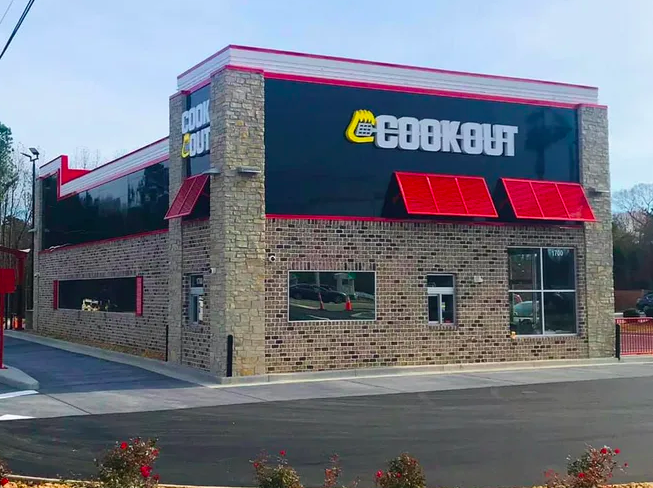Food truck owners regularly write me concerning alternative revenue streams outside of their usual vending stops. Because of this I’m always looking for ways vendors can expand their business without straying from the original concept.
Naturally, festivals and fairs could be a profitable focus for your mobile food business in its own right. Here’s how to add fairs, carnivals, and other annual festivals like these to your vending route.
Page Contents
Expanding To Festivals and Fairs
Because most festivals and fairs take place outdoors during the spring, summer and fall. A food or beverage concession or stand can offer lucrative short-term opportunities for vendors to make money. “The beauty of fairs is the built-in crowd.” says David Linder, the owner of Freedom Funnel Cakes, a trailer that selling traditional funnel cakes at various county fairs in the Upper Midwest from June – September. “The customers come to you, which is a dream situation for any vendor.”
According to Linder, it’s mot uncommon for vendors to generate $1,000 – $3,000 per day in gross food sales. Linder says he has has weekends where he grossed nearly $10,000 by working over the long Labor Day weekend. Here’s the process you can use to get into just about any fair or festival.
Research Locations
From my experience, the best place to find a list of events if FairsandFestivals.net. This website provides an updated list of craft fairs and festivals across all 50 states. Be sure to visit a variety of festivals and fairs before choosing the ones where you plan to vend.
Focus on events that draw the kind of clientele that will enjoy your food. For example, if you offer vegan food, you might not wish to vend at a professional wrestling event. If you serve lasagna and Italian food, you may not want to sell at a craft fair that runs from 7 am – 12 pm.
Choose events whose scale matches your production capacity. If an event is big and busy it will probably have a high booth fee, and if you don’t have the experience and resources to produce enough food to cover the fee, you could lose money even if you are very busy.
Get a Permit
It is relatively easy for a truck to transition their mobile food business into a festival or fair concessionaire. The first step is to contact the local health department where the event is located. This information is often published online. For example, here’s the temporary food permit process for San Diego County.
In many situations, the event you want to apply will provide information about the health permit requirements on their official website so make sure to check there too. The San Diego County Fair provides a 35-page document for food concessionaires answering all their questions. This document also includes details about booth size requirements, signage restrictions and information about accepting tips so there’s a lot of information to get through and learn.
Most will require that you do all your prep in a licensed commissary kitchen, just as you are required to do for your daily runs. If the event is too take place out of the area your commissary is located, you will need to arrange the use of a shared use kitchen or commissary in that area.
You may also need to obtain a separate temporary event permit for each of the festivals & fairs you attend.
Submit an Application
Applying to be a food vendor at a county fair or festival is a bit like applying for a special job where you get to sell your yummy food to lots of people. Here’s how it usually works.
- Find the Application: First, you need to find the event you want to sell at and get the application form. This is often found on the event’s website.
- Fill Out the Application: Next, fill in the form with all the requested details. This might include information about your food truck or stall, what kind of food you sell, and sometimes photos or menus.
- Pay the Application Fee: There’s often a small fee just to apply. This fee doesn’t guarantee you’ll get to sell at the event, but it covers the cost of them reviewing your application.
- Submit Your Application: Once you’ve filled everything out and paid the fee, you submit your application, usually online or by mail, depending on the event.
- Wait for Approval: Now, you wait to hear back. If you’re approved, you’ll get more details about what to do next.
- Pay the Vendor Fee: If you’re accepted, there’s usually a bigger fee that you have to pay to actually set up and sell at the event. The cost can vary a lot. For smaller events, it might be less than $100, but for big, popular events, it could be thousands of dollars. This fee is for the space and the chance to sell your food at the event.
- Get Ready for the Event: Once everything’s approved and paid for, you prepare your food, your stall or truck, and anything else you need to make a splash at the fair or festival.
Menu Selection
Just as you did when you began your food truck, you will need to design a menu that is both interesting and simple. There should be appealing options, but each item should take a minimum of time to prepare. You want a food item that you can crank out fast when you get a line of customers.

Classic examples of fair food.
Timeless concession foods are those classic, crowd-pleasing items that can be prepared quickly and easily sold at a fast pace. Some examples include popcorn, cotton candy, nachos, french fries, corn dogs, ice cream, and lemonade.
If you use similar ingredients in multiple menu items, you can streamline your processes and reduce waste. Offer food that smells good and is interesting or exciting to prepare, to lure potential customers over to your booth. The easiest route would be to use your existing food truck menu.
Additional Equipment
Although you already own a portable kitchen, you may have to purchase or rent additional kitchen equipment to meet the demands of the crowds you want to serve. To transport this additional equipment, you may have to rent a moving truck.
If you know you are going to be serving large crowds, speak with the event organizers to see if they will provide you with a trailer or truck with a refrigeration or freezer system so you can stay on site while replenishing your food stock. You may also need to buy a portable tent canopy with signage, tables, a cash box and whatever small wares your operation requires.
Insurance
Each fair or festival requires vendors to agree to various conditions. Some fairs cover vendors under a blanket insurance policy, while others expect you to carry your own insurance for the weekend or time of the fair. Research a festival before you begin the process of filing applications to make sure you’re willing and able to meet all requirements.
The cost and type of insurance required can vary significantly from one event to another. In some cases, you may need to purchase additional coverage or specific types of insurance, such as general liability insurance, product liability insurance, or even workers’ compensation insurance if you have employees helping at your booth.
Downsides of Events
“The fair circuit has taught me resilience.” says Theo Patrick, who owns a kettle corn booth named Daddy Pops. “Weather, competition, time away from family—it’s a mix of challenges.”
- Bad Weather: Weather can be unpredictable and harsh. Rain, wind, or extreme heat can keep customers away from the fair, hurting sales. Sometimes, storms can even damage your booth or equipment.
- Time Away from Family: Being a food vendor often means traveling to different fairs, which can keep you away from your family for days or weeks at a time. This can be tough, especially during the summer or holiday seasons when you want to be with loved ones.
- Long Hours: The days can be incredibly long. Vendors usually start early to set up and prepare food before the fair opens and continue late into the night until it closes. It’s physically demanding work with few breaks.
- Competition: There’s often a lot of competition at fairs, with many booths selling similar foods. Standing out and attracting customers in a crowded market can be challenging. Most good event planners will try to get a mix of food concepts, but it doesn’t always work out that way.
- Variable Income: Income can vary widely from fair to fair. Some events may bring in a lot of sales, while others might not be as profitable. This unpredictability can make budgeting and financial planning difficult.
Growth of a food truck business means a lot of things to different people. I am referring to the kind of growth that grows you, grows your team and grows your food truck organization. It grows a wealth that is far more satisfying than money alone.
Despite these challenges, many vendors find the work rewarding, enjoying the community, the excitement of fairs, and the joy of serving their food to happy customers. “When someone tells you they remember your food from last year, that’s when you know you’ve made an impact.” says Patrick.
You might not want your food truck to grow into festivals or fairs. You may be perfectly content with the service you currently provide or decide to grow your food truck business in other ways. That’s ok! At least you know your options.




